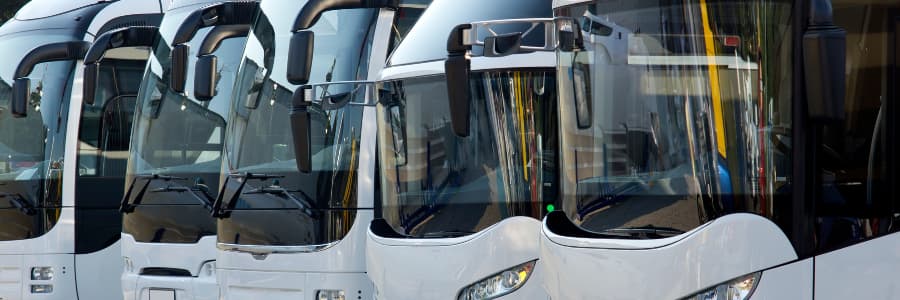The world’s electric fleets continue to grow at a rapid pace. The many benefits that businesses of all sizes can reap from switching to electric vehicles (EVs) is a key.
EV fleet charging is a central aspect of successfully transitioning to electric vehicles, and benefits range from cost savings to reduced emissions.
Fleet managers must understand the details of optimising EV fleet charging infrastructure and strategies. Creating an overview and launchpad for success starts with identifying best practices and finding answers to key questions.

Optimising the charging setup for EV fleets has many benefits for fleet operators.
Perhaps the most critical aspect is cost savings. Most EV vehicles are currently more expensive to buy than similar fossil-fuelled vehicles. However, lower operational costs, especially on fuel (electricity), lead to substantial savings compared to investing in a diesel-powered vehicle.
EV fleets also markedly reduce carbon emissions, including zero emissions at the tailpipe level. As the energy industry integrates more renewable energy sources, these climate savings will continue to rise.
EV fleet charging can also help fleet managers comply with current and future regulations covering logistics and transport. Many countries are introducing stricter emissions targets for these industries, and optimal EV charging can be vital for companies to achieve these goals.
Operational efficiency is another area where optimal EV charging is a plus. Smoother operations without delays due to unforeseen charging increase driver satisfaction, the ability to stay on schedule, and overall customer satisfaction.

The top-level starting point for calculating the optimal EV fleet charging setup is looking at transportation needs. This should include both your fleet’s current and future needs, including:
Due to the complex nature of the calculations, many fleet managers will stand to benefit from working with third-party experts. However, they can lead to large extra costs. A strong alternative is deploying software solutions that can cost-effectively calculate the optimal EV fleet charging setup.

Robust charging infrastructure is the backbone of your operations, keeping EV fleets running smoothly. Charging infrastructure revolves around the chargers themselves, the systems used for charging, and the connections to power supplies.
As with overall considerations, charging infrastructure planning should keep an eye on future fleet needs.
Some of the areas to study include:
As with EV fleet charging needs, infrastructure planning and development an area with many moving parts and potential pitfalls. Happily, there are solutions available for calculating these areas.

Fleet charging and infrastructure needs will depend heavily on the needs and composition of your EV fleets. For example, smaller EV fleets, like a handful of electric vans for last-mile delivery, have vastly different requirements – and optimal setup – from those of a city bus company.
While flexible and efficient charging solutions are priorities for both, the nature of chargers and charging schedules are different. To ensure that your charging setup and fleets match, some of the key considerations will depend on the size of the fleet and the types of vehicles.

Some of the key considerations for smaller electric vehicles and EV fleet sizes include the following:

Some of the key considerations for larger electric vehicles and EV fleet sizes include the following: